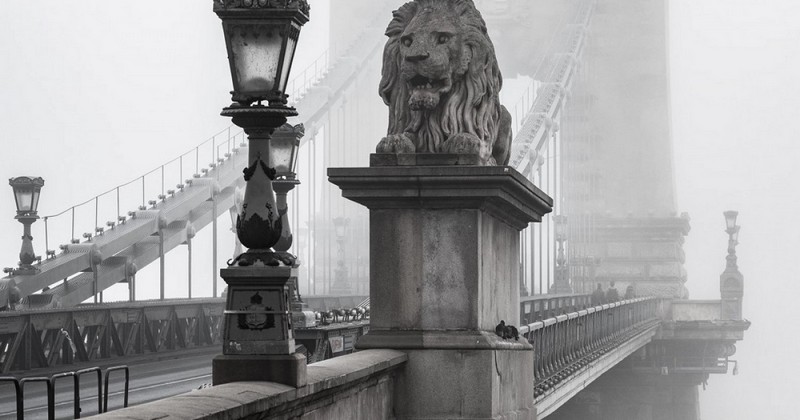Gephyrophobia (extreme fear of bridges): symptoms, causes and treatment.

A type of phobia related to bridges and the obsessive idea that we can fall off them.
Gephyrophobia is the irrational or excessive fear of bridges.. It is a phobia that has been described and studied in relation to other types of phobia (not as a particular clinical picture). As it is a fear of structures that are particularly common in large cities, gephyrophobia can represent a significant experience of discomfort for the sufferer.
Below we will see what is gefirofobia, what are some of its manifestations and possible causes, as well as strategies that could counteract this fear of bridges.
Gephyrophobia: the fear of bridges
In Greek, the word gefura (γέφῡρᾰ) means "bridge" and "phobos" (φόβος) means fear. Hence, the term "gefirophobia" is used to designate the fear of bridges. As is the case with phobias described from psychopathology, to be considered as such it must be a fear that is considered irrational, because it causes clinically significant discomfort that cannot be justified by the cultural codes in which it occurs.
In other words, gephyrophobia is the irrational fear of bridges, which is irrational because it occurs in contexts where bridges are objects of everyday use and do not in themselves have a quality that potentially signifies some kind of risk. Therefore, they are architectural structures that do not usually cause fear to those who cross them on a daily basis.
Main symptoms
Being a fear that causes clinically significant discomfort, phobias can represent a major obstacle to performing the most everyday and seemingly simple activities. In the case of gefirofobia, the person may avoid at all costs routes involving the crossing of bridgesespecially in the case of large bridges that need to be crossed by car.
Otherwise, that is, when exposed to a situation in which it is necessary to cross a bridge, the person may experience the typical manifestations of specific phobias. Such manifestations include the spectrum of physiological response characteristic of anxiety: dizziness, agitation, hyperventilation, accelerated Heart rate, and even panic attacks.
Possible causes
Gephyrophobia is characterized by ideas or thoughts about different scenarios associated with falling from or onto bridgeswhich generates fear.
Such thoughts may be due to a previous experience of danger associated with a bridge; or they may be related to having witnessed a high-risk incident related to the same, either in person or indirectly through the press, movies or other media. But not necessarily, in fact, it may be a fear that is apparently unrelated to any previous experience in the subject's life.
In general, the fear of bridges is explained through elements such as the following:
- Fear that a part of the bridge will become detached..
- Fear that a gust of wind will blow across the bridge and move cars intensely.
- Doubt about the structural integrity of the bridge.
- Fear that the bridge will collapse easily.
Relationship between gephyrophobia, agoraphobia and acrophobia
According to Foderaro (2008), Michael R., M.D., Ph. Liebowitz, professor of clinical psychiatry at Columbia University and founder of the Anxiety Disorders Clinic at the New York Institute of Psychiatry, has explained that, while fear of taking planes has become intensified and recognized as a trigger for anxiety, especially in the United States after 9/11, fear of crossing bridges is much less well known and generally continues to carry a stigma for those who have it. continues to carry a stigma for those who have it..
For the same reason, there are no exact numbers of people who experience it, but the same psychiatrist says that "it is not an isolated or isolated phobia, but a part of a broad group". It is rather a type of phobia related to the fear of large or wide open spaces.
In other words, gephyrophobia is closely linked to acrophobia (fear of heights) and agoraphobia (fear of open spaces where help is lacking). In the same vein, the other side of gefirofobia is the fear that some drivers have of passing through tunnels, an issue that is closely linked to claustrophobia (fear of narrow spaces).
In fact, gephyrophobia is often experienced more strongly when it comes to high bridgescompared to those that are a short distance from the ground or water.
Treatment
As with other phobias, clinical psychology has different tools to treat gefirofobia. There are different strategies that vary according to the theoretical approach. For example, these strategies may be focused on favoring a modification of the thoughts that generate anxiety.
On the other hand, they could favor a gradual approach to the bridge that allows the person to experience them in a different way. Likewise, intervention strategies can focus on exploring the meanings associated with the risk posed by bridges and attempt to reinforce or modify emotional coping patterns. But not only psychology can intervene in the treatment of gephyrophobic experiences.
Driver assistance teams
Mohney (2013) tells us that the Mackinac Bridge in Michigan, USA (one of the largest suspension bridges in the world), has proven to be both a tourist attraction and an imposing urban structure, easily causing fear in many drivers.
As of 2013, between 1,200 and 1,400 calls were received each day by the Michigan Driver Assistance Program, who dispatches assistance team to accompany drivers as they cross the bridge.. Such calls and assistance teams often intensify their activity after news of accidents involving bridge falls. A similar program exists at the Tappan Zee Bridge in New York, which sits more than 150 feet from the Hudson River and often inspires panic in several drivers.
Bibliographic references:
- Mohney, G. (2013). Motorists Can't Face Fears, Get a Lift Across Bridge. ABC News. Retrieved August 21, 2018. Available at https://abcnews.go.com/Health/terrified-motorists-lift-bridge/story?id=19250164
- Stein, D., Hollander, E., Rothbaum, B. (2009). Textbook of Anxiety Disorders. American Psychiatric Publishing: Washington, DC.
- Foderaro, L. (2008). To Gephyrophobia, Bridge Are a Terror. New York City. Retrieved August 21, 2018. Available at https://www.nytimes.com/2008/01/08/nyregion/08bridge.html
(Updated at Apr 13 / 2024)